

Visit our AMS COVID-19 page for educational and professional resources and scheduling updates
| See videos of most of the following talks here. | |
|---|---|

Belin Tsinnajinnie |
MAA-SIAM-AMS Hrabowski-Gates-Tapia-McBay LectureMoving from changing the faces of mathematics to changing who mathematics serves Wednesday, January 15, 2020, 9:00 a.m.- 9:50 a.m. Room 207, Colorado Convention Center Providing support for aspiring and current mathematicians from marginalized and underrepresented communities is often at the center of diversity and inclusion efforts. Conversations centered on the importance these efforts are often framed by the need for diversity and inclusion as a necessity to advance the fields of mathematics. However, there are few conversations taking place in diversity and inclusion in mathematics that center the needs and goals of marginalized and underrepresented communities. In this talk, I draw upon my own experiences of inclusion/exclusion and sense of inadequacy in both academic mathematics communities and my home communities to call for a shift in the ways we can frame conversations of diversity, equity, and inclusion in mathematics. I seek to shift our frames towards the question: How will diversity and inclusion in mathematics directly empower marginalized communities? |
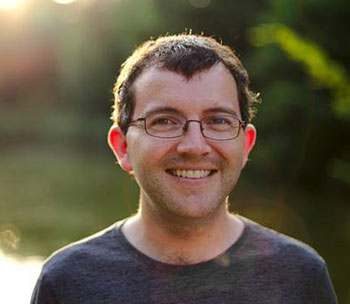
Anthony Várilly-Alvarado |
AMS Invited AddressThe geometric disposition of Diophantine Equations Wednesday, January 15, 2020, 10:05 a.m.- 10:55 a.m. Four Seasons Ballroom 2, 3, 4, Lower Level, Colorado Convention Center Which integers can be expressed as a sum of three cubes? Is there a box such that the distance between any two of its corners is a rational number? Is there a $3\times 3$ magic square of squares? These and many other questions can be phrased mathematically as diophantine problems. The properties of the geometric avatars corresponding to these diophantine problems help understand why these problems are so difficult, and why there almost certainly isn’t an elementary way to answer the original questions. In this talk I will survey the idea that geometric classification theorems provide a good lens for use in the study of diophantine equations, and explain concrete instances in my own research where geometric insights in the theory of algebraic surfaces have led a better understanding of certain diophantine equations. |
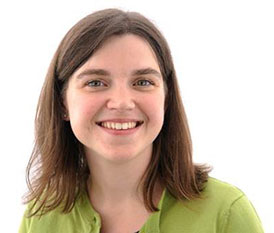
Karen Lange |
AMS-MAA Invited AddressDifferent problems, common threads: Computing the difficulty of mathematical problems Wednesday, January 15, 2020, 11:10 a.m.- 12:00 p.m. Four Seasons Ballroom 2, 3, 4, Lower Level, Colorado Convention Center Mathematics is filled with existence theorems such as `"every vector space has a basis". Such statements do not address how one goes about finding the known-to-exist object. The prior theorem naturally leads to the question "given a vector space, can we compute a basis for it?". The answer to this "Basis Problem" is no, so we say that the problem is not "computable". We can further ask just how far from computable the Basis Problem is and what other problems have the same computational power. A natural way to compare the algorithmic difficulty of two problems is to determine whether having the ability to solve one allows for the solution of the other. Under this problem-reduction approach, two problems have the same computational power if each can be used to solve the other. In this talk, we will explore the key ideas behind taking a "computable" perspective on mathematics and how this compares to an ``existence" one. We will illustrate the problem-reduction approach using theorems from across mathematics. The overall structure of problem---difficulty is extremely rich and helps to illuminate what makes problems "tick". Moreover, this approach has strong connections to calibrating exactly which axioms are needed to prove the original existence theorems. |

Ingrid Daubechies |
AMS Colloquium LecturesLECTURE I Mathematical Frameworks for Signal and Image Analysis. Lecture I: Multiresolution analysis, wavelets and beyond Wednesday, January 15, 2020, 1:00 p.m.- 1:50 p.m. Four Seasons Ballroom 2, 3, 4, Lower Level, Colorado Convention Center We will visit several examples in signal and image analysis, every time building an appropriate mathematical framework, ranging from functional and harmonic analysis to differential geometry. Although there will be cross-referencing, the lectures will be sufficiently independent that each can stand on its own, so that JMM participants could follow any of the lectures even if they missed one or more preceding it. Lecture I: A review of some existing techniques in mathematics underlying image analysis, as well as some very recent developments. LECTURE II Mathematical Frameworks for Signal and Image Analysis. Lecture II: Diffusion methods in manifold and fibre bundle Learning Thursday, January 16, 2020, 1:00 p.m.- 1:50 p.m. Four Seasons Ballroom 2, 3, 4, Lower Level, Colorado Convention Center We will visit several examples in signal and image analysis, every time building an appropriate mathematical framework, ranging from functional and harmonic analysis to differential geometry. Although there will be cross-referencing, the lectures will be sufficiently independent that each can stand on its own, so that JMM participants could follow any of the lectures even if they missed one or more preceding it. Lecture II: Diffusion methods help understand and denoise data sets; when there is additional structure (as is often the case), one can use (and get additional benefit from) a fiber bundle model. LECTURE III Mathematical Frameworks for Signal and Image Analysis. Lecture III: Adaptive time-frequency methods Friday, January 17, 2020, 1:00 p.m.- 1:50 p.m. Four Seasons Ballroom 2, 3, 4, Lower Level, Colorado Convention Center We will visit several examples in signal and image analysis, every time building an appropriate mathematical framework, ranging from functional and harmonic analysis to differential geometry. Although there will be cross-referencing, the lectures will be sufficiently independent that each can stand on its own, so that JMM participants could follow any of the lectures even if they missed one or more preceding it. Lecture III: Many audio and medical signals (such as ECG) depending exhibit frequency profiles that “change with time”. To even define this notion, one needs time-frequency (a.k.a. microlocal) analysis. Extracting precise components can be quite challenging; this talk reviews some recent advances. |

Scott Adamson |
MAA Invited AddressMazes, Riddles, Zombies, and Unicorns! Wednesday, January 15, 2020, 2:15 p.m.- 3:05 p.m. Four Seasons Ballroom 2, 3, 4, Lower Level, Colorado Convention Center Can mathematics be an engaging endeavor worthy of academic pursuit? Can students be involved in meaningful learning experiences? Having observed many classrooms, it seems that the answers are a heartbreaking “No.” Reflect on what often happens in classrooms. Teachers may: unwittingly communicate that mathematics is so mind numbing and senseless, that they must “jazz it up”, tricking students to engage in mathematical activity; hijack thinking by telling students what to know without allowing them opportunities to grapple with ideas; write notes while students passively copy. There is no expectation or opportunity to make sense, to reason, to understand, or to engage in authentic mathematical thinking and discovery. Reflect on what could happen in classrooms. Imagine experiences where students are: using manipulatives to represent real-world situations; building procedural fluency with algorithms by developing conceptual understanding; struggling productively to make sense of ideas while modeling with mathematics; collaborating as they make their reasoning visible while solving challenging problems. I will highlight these issues and provide effective strategies for involving students in authentic mathematical thinking and discovery as they joyfully engage in joyful mathematics! |
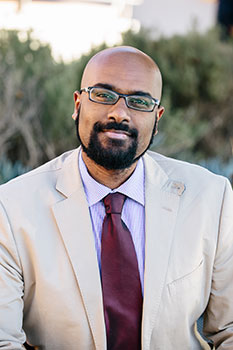
Mohamed Omar |
MAA Invited AddressThe Art and Craft of Problem Design Wednesday, January 15, 2020, 3:20 p.m.- 4:10 p.m. Four Seasons Ballroom 2, 3, 4, Lower Level, Colorado Convention Center How does one pick the right research problem to work on? How can we create assignment problems that are not decent nor good, but great? How does one make innovative problems for math competitions? These are questions that have been central throughout the speaker’s career, and common threads between them have had surprising influences on each other. Come hear how the art and craft of problem design plays a key role in a mathematical career. |
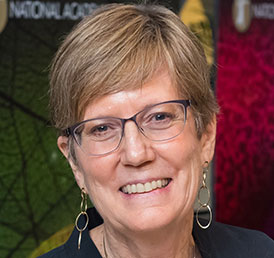
Nancy Reid |
AMS Josiah Willard Gibbs LectureIn praise of small data: statistical and data science Wednesday, January 15, 2020, 8:30 p.m.- 9:20 p.m. Four Seasons Ballroom 2, 3, 4, Lower Level, Colorado Convention Center The over-promotion of ``Big Data'' has perhaps settled down, but the data are still there, and the rapid development of the new field of data science is a response to this. As more data become available, the questions asked become more complex, and big data can quickly turn into small data. Statistical science has developed an arsenal of methods and models for learning under uncertainty over its 200-year history. Some thoughts on the interplay between statistical and data science, their interactions with science, and the ongoing relevance of statistical theory, will be presented, and illustrated through a number of examples. |
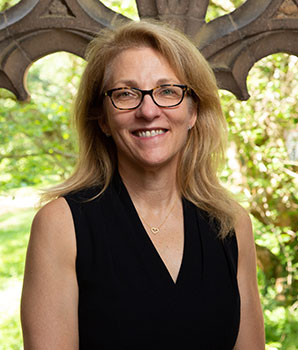
Della Dumbaugh |
MAA Invited AddressProspering Through Mathematics Thursday, January 16, 2020, 9:00 a.m.- 9:50 a.m. Four Seasons Ballroom 2, 3, 4, Lower Level, Colorado Convention Center Solomon Lefschetz, Emil Artin, Gertrude Cox and Rudy Horne all enjoyed successful careers in mathematics. These mathematicians, separated by mathematical discipline, nationality, time, institution and background also all faced---and overcame---hardships. They met the challenges of their human lives, in part, through their mathematical work at particular institutions. But what if we turn this lens around? What if we consider how mathematics created the space for these mathematicians to find success? Mathematics in particular allowed them to prosper, to the point where they had plenty to give to the next generation. Their lives prompt us to take up the natural next question of “how?” How can we use the space of mathematics to help shape students and colleagues into better human beings? And how can we accomplish this lofty goal with increasing demands on our time and rosters of students who may only take a single math class? This talk explores the professional experiences and personal lives of mathematicians to underscore the power of mathematics, not just as a career path, but as a place to grow into a full human being. It also outlines effective strategies for intentionally identifying the power of the discipline to direct students and colleagues toward meaningful lives. |

Birgit Speh |
AWM-AMS Noether LectureBranching laws for representations of a non compact orthogonal group Thursday, January 16, 2020, 10:05 a.m.- 10:55 a.m. Four Seasons Ballroom 2, 3, 4, Lower Level, Colorado Convention Center Finite dimensional representations of classical groups were first treated systematically by Hermann Weyl in his famous book "The Classical Groups: Their Invariants and Representations" 80 years ago. In this book he classified the irreducible representations $\Pi:\ SO(n)\to\rm{Aut}(V )$ for a finite dimensional vector space V. H. Weyl also considered the restriction of an irreducible representation to a subgroup and proved that the restriction of a finite dimensional representation is a direct sum of finite dimensional representations. In 1938, famous branching rules were proved describing the multiplicity dim $\rm{Hom}_{SO(n−1) }(\pi, \Pi)$ for the restriction of an irreducible representation $\Pi$ of $SO(n)$ to an irreducible representation $\pi$ of $SO(n-1)$ by F. Murnaghan. A noncompact orthogonal group $SO(p, q)$ also has infinite dimensional irreducible representations. Unfortunately the restriction of an infinite dimensional representation of $SO(p, q)$ to a subgroup $SO(r, s)$ is often not a direct sum of irreducible representations. In this talk I will show that for infinite dimensional representations $\Pi$ of $SO(n, 1)$ and infinite dimensional representations $\pi$ of $SO(n − 1, 1)$ we obtain very similar branching laws for dim $\rm{Hom}-{SO(n−1) }(\Pi, \pi)$ although the restriction of the representation is not a direct sum of irreducible representations. |
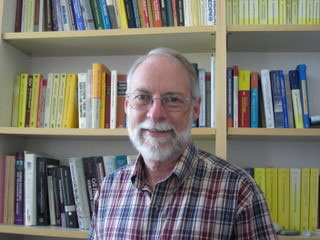
James Keener |
SIAM Invited AddressThe Mathematics of Life: Making Diffusion Your Friend Thursday, January 16, 2020, 11:10 a.m.- 12:00 p.m. Four Seasons Ballroom 2, 3, 4, Lower Level, Colorado Convention Center Diffusion is the enemy of life. This is because diffusion is a ubiquitous feature of molecular motion that is constantly spreading things out, destroying molecular aggregates. However, all living organisms, whether single cell or multicellular have ways to use the reality of molecular diffusion to their advantage. That is, they expend energy to concentrate molecules and then use the fact that molecules move down their concentration gradient to do useful things. In this talk, I will show some of the ways that cells use diffusion to their advantage, to signal, to form structures and aggregates, and to make measurements of length and size of populations. Among the examples I will describe are signalling by nerves, cell polarization, bacterial quorum sensing, length measurement of flagella and cilia, and cell size measurement. In this way, I hope to convince you that living organisms have made diffusion their friend, not their enemy. |
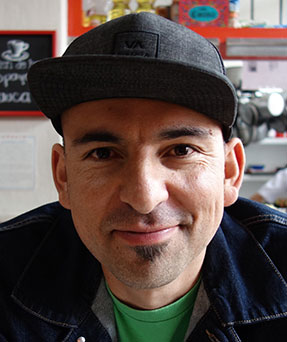
Federico Ardila-Mantilla |
MAA Project NExT Lecture on Teaching and LearningTodxs Cuentan: Difference, Humanity, and Belonging in the Mathematics Classroom Thursday, January 16, 2020, 11:10 a.m.- 12:00 p.m. Four Seasons Ballroom 1, Lower Level, Colorado Convention Center Everyone can have joyful, meaningful, and empowering mathematical experiences; but no single mathematical experience is joyful, meaningful, and empowering to everyone. How do we build mathematical spaces where every participant can thrive? Audre Lorde advises us to use our differences to our advantage. bell hooks highlights the key role of building community while addressing power dynamics. Rochelle Gutierrez emphasizes the importance of welcoming students' full humanity. This talk will discuss some efforts to implement these ideas in mathematical contexts, and some lessons learned along the way. |
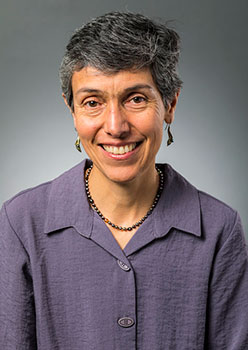
Tatiana Toro |
AMS Maryam Mirzakhani LectureDifferential operators and the geometry of domains in Euclidean space Thursday, January 16, 2020, 2:15 p.m.- 3:05 p.m. Four Seasons Ballroom 2, 3, 4, Lower Level, Colorado Convention Center In this talk we will introduce an area of analysis that is concerned with the extent to which a differential operator, and the properties of its solutions, determine the geometry of the domain on which they are considered. We will initially describe the case where the differential operator sees the domain as a homogeneous medium. We will contrast this with several inhomogeneous cases and mention some recent results in that direction. The tools used come from analysis of partial differential equations, harmonic analysis and geometric measure theory. |
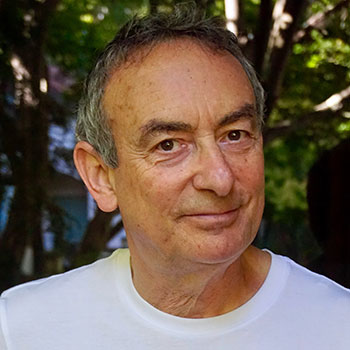
Kenneth A. Ribet |
AMS Retiring Presidential AddressA 2020 view of Fermat's Last Theorem Thursday, January 16, 2020, 3:20 p.m.- 4:10 p.m. Four Seasons Ballroom 2, 3, 4, Lower Level, Colorado Convention Center Fermat's Last Theorem was formulated in the seventeenth century and proved a little over 25 years ago. I will recall the statement of the theorem and present a skeletal summary of the proof as it was viewed in 1993 or 1994. (I gave an invited hour address at the 1994 JMM in Cincinnati on this topic but concluded my address with a discussion of the "gap" that Nick Katz had identified in the proof that Andrew Wiles announced in June, 1993. The gap was repaired in late 1994 by an article that was co-authored by Richard Taylor and Andrew Wiles.) I will describe (or at least allude to) some the advances in this general subject that were made possible by the new techniques that were introduced in the proof: for example, the proofs of Serre's conjecture about mod p Galois representations and the Fontaine--Mazur conjecture about p-adic Galois representations should be viewed as outgrowths of the Taylor--Wiles method that was introduced in 1994. The question is whether or not recent progress in the study of Galois representations and modular forms has streamlined or simplified the proof of Fermat's Last Theorem to a significant extent. The short answer is: maybe yes, and maybe no. For a longer answer... come to the talk. |
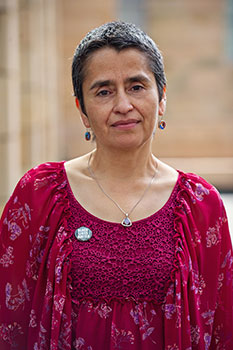
Vilma Mesa |
MAA Invited AddressInstruction and Resources in Post-secondary Mathematics: How their Interplay Shape What We Do in the Classroom Friday, January 17, 2020, 9:00 a.m.- 9:50 a.m. Four Seasons Ballroom 2, 3, 4, Lower Level, Colorado Convention Center In this presentation I describe studies I have conducted to investigate how instructors, students, and resources interact in classrooms in order to create opportunities for mathematics learning in post-secondary settings. I showcase the evolution of two apparently independent research strands that together have helped me understand first, the centrality of resource use by instructors and students and its implications for student learning and, second, the complexity of the work that faculty do. |
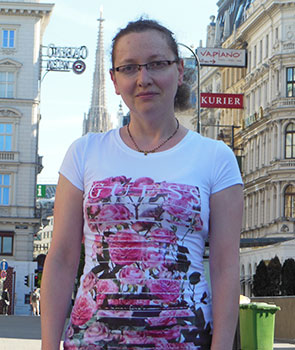
Victoria Gitman |
ASL Invited AddressToy multiverses of set theory Friday, January 17, 2020, 9:00 a.m.- 9:50 a.m. Room 302, Colorado Convention Center Modern set theoretic research has produced a myriad of set-theoretic universes with fundamentally different properties and structures. Multiversists hold the philosophical position that none of these universes is the true universe of set theory - they all have equal ontological status and populate the set-theoretic multiverse. Hamkins, one of the main proponents of this view, formulated his position via the heuristic Hamkins Multiverse Axioms, which include such radical relativity assertions as that any universe is ill-founded from the perspective of another universe in the multiverse. With Hamkins, we showed that the collection of all countable computably saturated models of ZFC satisfies his axioms. Countable computably saturated models form a unique natural class with a number of desirable model theoretic properties such as existence of truth predicates and automorphisms. Indeed, any collection of models satisfying the Hamkins Multiverse Axioms must be contained within this class. In a joint work with Toby Meadows, Micha l Godziszewski, and Kameryn Williams, we explore which weaker versions of the multiverse axioms have ‘toy multiverses’ that are not made up entirely of computably saturated models. |
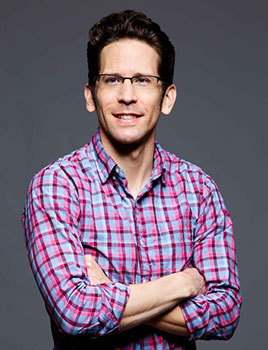
Wesley H. Holliday |
ASL Invited AddressAxiomatizing reasoning about sets: cardinality, mereology, and decisiveness Friday, January 17, 2020, 10:00 a.m.- 10:50 a.m. Room 302, Colorado Convention Center Axiomatizing reasoning about sets: cardinality, mereology, and decisiveness. In this talk, I give three examples of axiomatizing reasoning about sets in special purpose languages. First, I consider reasoning about comparative cardinality: $A > B$ if there is an injection from $B$ to $A$. I add principles to Boolean algebra to axiomatize reasoning not only about Boolean operations but also about $>$. Second, I consider reasoning about the subset relation (“set-theoretic mereology”) in a modal language: $\blacklozenge\phi$ is true at a set $A$ if there is a nonempty $B\subseteq A$ such that $\phi$ is true at $B$. I discuss the longstanding open problem of giving a recursive axiomatization of the set of validities for finite sets. Finally, I give an example outside of pure mathematics from voting theory: a set A of voters is decisive over candidates $x, y$ if whenever all voters in A prefer $x$ to $y$, society must rank $x$ above $y$. I present an axiomatization of reasoning about decisive sets of voters for voting methods satisfying well-known axioms. These examples are meant to illustrate a methodology familiar to modal logicians: to better understand the core principles governing some mathematical concept, try to axiomatize the validities of a lean language with dedicated operators whose semantics is given by the target concepts. |
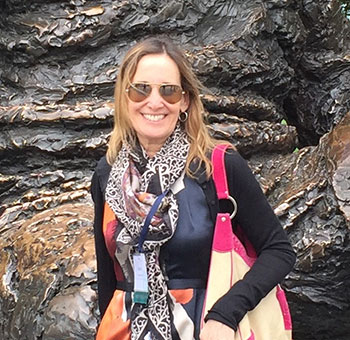
Bonnie Berger |
AMS Invited AddressBiomedical data sharing and analysis at scale Friday, January 17, 2020, 10:05 a.m.- 10:55 a.m. Four Seasons Ballroom 2, 3, 4, Lower Level, Colorado Convention Center Researchers around the globe are gathering biomedical information at a massive scale. However, growing privacy concerns and computational overhead limit researchers' access to these data. In this talk, I will present novel computational approaches that help overcome these barriers to improve the scalability of essential biomedical analysis pipelines. First, I will describe how modern cryptography presents a path toward broader data sharing and collaboration in biomedicine as demonstrated by my recent work on secure genome-wide association studies (GWAS) and pharmacological machine learning. Second, I will build upon our initial introduction of compressive genomics, which capitalized on the growing redundancy and unique structure of biological data, to accelerate and enhance computational data analysis. I will demonstrate how compressive techniques can be used to build compact summaries of rapidly growing single-cell transcriptomic datasets to facilitate their sharing and analysis. These results lay a foundation for more effective and collaborative biomedical research, whereby an unprecedented scale of data can be pooled from individuals and institutes across nations to enable novel life-saving discoveries. |
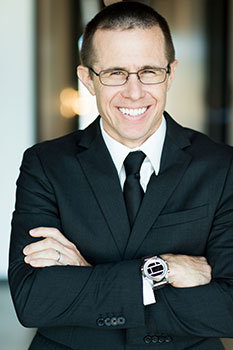
Skip Garibaldi |
AMS-MAA Invited AddressUncovering lottery shenanigans Friday, January 17, 2020, 11:10 a.m.- 12:00 p.m. Four Seasons Ballroom 2, 3, 4, Lower Level, Colorado Convention Center Mathematicians since Euler have been interested in studying lotteries. Analyzing the games is made easier because the probabilities involved are clearly defined, yet the very large number of participants and variances in outcomes lead to subtle questions. Focusing on specific games provides an additional source of interest, because each game has individual quirks. When looking at the outcomes of real games, it sometimes appears that people are up to shenanigans. Digging deeper, it may turn out that the apparent anomalies are not nefarious at all, just an illusion resulting from the oceans of tickets that are sold. Sometimes the scheme is real, but, surprisingly, entirely legal. And sometimes it is mostly illegal or an indicator of a larger criminal enterprise. This talk focuses on the latter kind of shenanigans. |
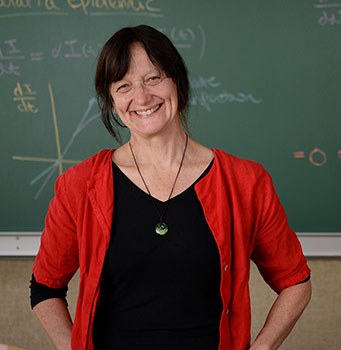
Ami Radunskaya |
MAA Invited Address - Lecture for StudentsOn the Scales of One to Infinity: Learning to Listen to Your Mathematics Friday, January 17, 2020, 1:00 p.m.- 1:50 p.m. Four Seasons Ballroom 1, Lower Level, Colorado Convention Center Many mathematical constructs can be manifested as sounds! The visual palette is three dimensional, or four if you include color; in some ways, the sonic palette is richer. Our ears can perceive along many axes, including pitch, loudness, timbre, harmonic complexity and time. How could you better understand your mathematical problem by hearing it, as well as seeing it? For example, why is the ``harmonic” series called by this name? Can we hear that the harmonic series diverges? Did you know we can “listen” to a dynamical system in order to understand its structure? Some features of common functions are better heard than seen! Together, we will explore the “route to chaos” via graphs and sounds, with live demonstrations. |
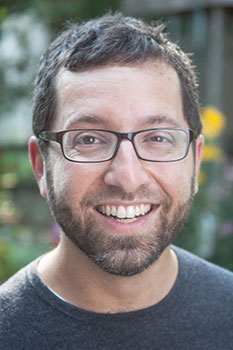
Jordan S. Ellenberg |
Current Events Bulletin Session - Lecture IGeometry, inference, and democracy Friday, January 17, 2020, 1:00 p.m. Room 205, Colorado Convention Center Every ten years, after the census, each U.S. state is divided into legislative districts. This might sound like a dry technical exercise, but it's now red-hot political issue. That's because it's now clear that the same group of voters can send a Republican or Democratic majority to make the laws, depending who gets to draw those districts. The problem of gerrymandering --- drawing districts with an intent to lock in control by one political faction --- intertwines mathematics, law, and politics into an uncuttable knot. How can we tell whether a district map was gerrymandered? How much unfairness is too much? What does a “fair map" even mean, anyway? I'll talk about the rapidly moving current mathematical developments in this area, and the way these developments have translated (and sometimes failed to translate) into legal doctrines when mathematicians meet the judicial system |
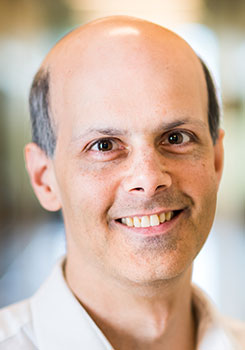
Bjorn Poonen |
Current Events Bulletin Session - Lecture IIA $p$-adic approach to rational points on curves Friday, January 17, 2020, 2:00 p.m. Room 205, Colorado Convention Center In 1922, Mordell conjectured the striking statement that for a polynomial equation $f(x; y) = 0$, if the topology of the set of complex number solutions is complicated enough, then the set of rational number solutions is finite. This was proved by Faltings in 1983, and again by a different method by Vojta in 1991, but neither proof provided a way to provably find all the rational solutions, so the search for other proofs has continued. Recently, Lawrence and Venkatesh found a third proof, relying on variation in families of $p$-adic Galois representations; this is the subject of the lecture. |
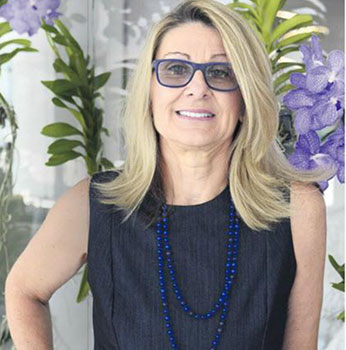
Suncica Canic |
Current Events Bulletin Session - Lecture IIIRecent progress on moving boundary problems Friday, January 17, 2020, 3:00 p.m. Room 205, Colorado Convention Center Even though the interaction between fluids and solids is one of the most classical problems in fluid mechanics, mathematicians have only recently begun developing a systematic theory to study this class of problems. The strong nonlinearities make the coupled, nonlinear moving boundary problem(s) exceedingly difficult to study. In this talk I will survey the most recent developments in this area, and show how the mathematical theory we are developing influences real-life problems, such as optimal design of cardiovascular prostheses, and optimal design of bioartificial pancreas. |
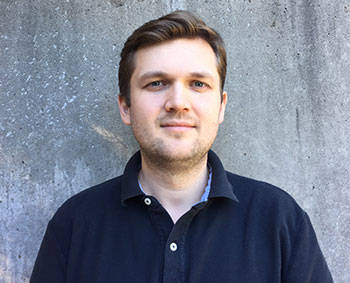
Vlad C. Vicol |
Current Events Bulletin Session - Lecture IVConvex integration and fluid turbulence Friday, January 17, 2020, 4:00 p.m. Room 205, Colorado Convention Center The Navier-Stokes and the Euler equations are the fundamental models describing incompressible homogenous fluids, with and without viscosity. Based on theories of fluid turbulence, one may expect that solutions of these equations have on average a finite degree of smoothness, in the infinite Reynolds number limit. These ideas go back to Kolmogorov '41 and to Onsager '49. As such, it is natural to consider weak or distributional solutions of the uid equations. The behavior of weak solutions to the Navier-Stokes and Euler equations is however mysterious: the equations appear to be too soft at this low smoothness level. One may exhibit weak solutions which have finite kinetic energy, and have compact support in time: the fluid is fully at rest, then it starts to move, and then it goes back to sleep. In this talk, we survey a number of results concerning such wild weak solutions of the uid equations. These works build on the groundbreaking works of De Lellis and Szekelyhidi Jr., who extended Nash's fundamental ideas on $C^1$ flexible isometric embeddings, into the realm of fluid dynamics. These techniques, which go under the umbrella name "convex integration", have fundamental analogies the phenomenological theories of turbulence. |
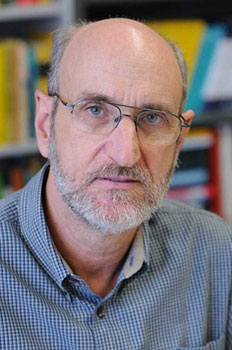
Alexander S. Kechris |
ASL Invited AddressCountable Borel equivalence relations Friday, January 17, 2020, 1:00 p.m. - 1:50 p.m. Room 302, Colorado Convention Center The theory of definable equivalence relations has been a very active area of research in descriptive set theory during the last three decades. It serves as a foundation of a theory of complexity of classification problems in mathematics. Another source of motivation for the theory of definable equivalence relations comes from the study of group actions, in a descriptive, topological or measure-theoretic context, where one naturally studies the structure of the equivalence relation whose classes are the orbits of an action and the associated orbit space. An important part of this theory is concerned with the structure of countable Borel equivalence relations, i.e., those Borel equivalence relations all of whose classes are countable. It turns out that these are exactly the equivalence relations that are generated by Borel actions of countable discrete groups and this brings into this subject important connections with group theory, dynamical systems, and operator algebras. In this talk, I will give an introduction to some aspects of the theory of countable Borel equivalence relations. |
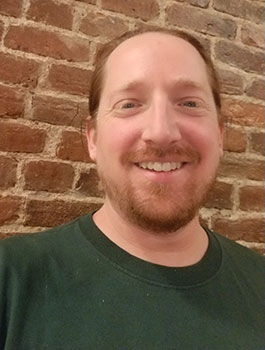
Cameron E. Freer |
ASL Invited AddressRepresentation theorems for exchangeable structures: a computability-theoretic perspective Friday, January 17, 2020, 2:00 p.m. - 2:50 p.m. Room 302, Colorado Convention Center Exchangeability and related hypotheses describe the symmetries under which random sequences, arrays, and other structures are invariant. Classical theorems of probability theory due to de Finetti, Aldous, Hoover, Kallenberg, and others characterize the conditional independence that such structures must exhibit, and provide explicit ergodic decompositions. In this talk, we explore the computable content of these theorems, providing both positive and negative results. We also discuss some motivation from the theory of probabilistic programming languages. Joint work with Nathanael Ackerman, Jeremy Avigad, Daniel Roy, and Jason Rute. |
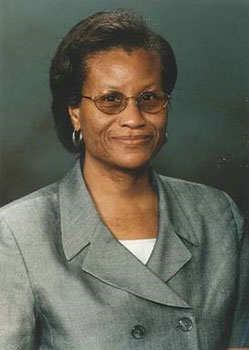
Roselyn Williams |
NAM Cox-Talbot AddressBridging the Gaps in Undergraduate Mathematics Education Friday, January 17, 2020, 7:45 p.m. - 8:35 p.m. Centennial Ballroom A, B, C, Hyatt Regency Denver The mathematical courses of today contain students from a large spectrum of backgrounds and skills. In a classroom setting there are students who are well prepared to master the subject matter, as well as those who are under prepared to do so. The question is how to provide instruction that challenges the best students and with enough detail that benefits under prepared students in a manner in which all students can be successful in their course work. This talk explores strategies to complement classroom lectures and text books in a manner that empowers and inspires students to be independent learners. For all students, learning should be an enjoyable experience of building confidence, acquiring knowledge, and developing the skills necessary to become effective problem solvers. |
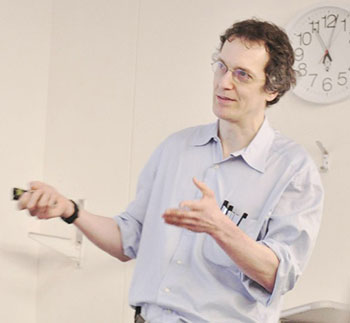
Gregory W. Moore |
AMS Invited AddressSmooth invariants of four-dimensional manifolds and quantum field theory Saturday, January 18, 2020, 9:00 a.m. - 9:50 a.m. Four Seasons Ballroom 2, 3, 4, Lower Level, Colorado Convention Center Quantum Field Theory offers an interesting perspective on many topological and geometric invariants in mathematics. Insights from physics can lead to new and unexpected predictions about concrete mathematical quantities, predictions that are amenable to rigorous analysis. This talk focuses on the renowned example of Donaldson and Seiberg-Witten invariants in the theory of four-manifolds. In this case physics predicts an interesting equality between a path integral of an “ultraviolet” (UV) and an “infrared” (IR) quantum field theory. The physical relation between the UV and IR theories allows one to derive the relation between Donaldson and Seiberg-Witten invariants. They key to the analysis is a finite-dimensional integral called the “u-plane integral.” The talk will describe some recent insights into the u-plane integral. For all four-manifolds with $b^+_2 = 1$ it can be identified with the constant term in the Fourier expansion of a Mock modular (or Jacobi) form. The physical approach also leads to several generalizations of the relation of Donaldson and Seiberg-Witten invariants. Finally, time permitting, a further generalization to families of four-manifolds will be described. |
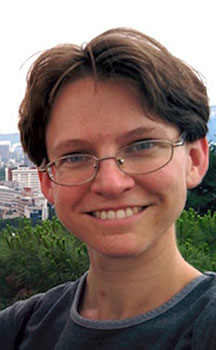
Linda Brown Westrick |
ASL Invited AddressBorel sets in reverse mathematics Saturday, January 18, 2020, 9:00 a.m. - 9:50 a.m. Room 302, Colorado Convention Center Reverse mathematics is a program that seeks to answer the question: which set-existence axioms are needed to prove theorems of ordinary mathematics? However, even the simplest theorems about Borel sets – that they have the property of Baire and are measurable – had not been analyzed in a satisfactory way. The standard definition of a Borel set in reverse mathematics has the axiom of arithmetic transfinite recursion (ATR) already baked into it. Thus no interesting reversals could be obtained for theorems such as the above, which are usually proved using only ATR. We propose a new definition for a Borel set in reverse mathematics, that of a completely determined Borel set. Using this definition, we find that “Every Borel set has the property of Baire” and “Every Borel set is measurable” are strictly weaker than ATR but do imply the existence of ∆1 1 -generics and ∆1 1 -randoms respectively. The same techniques permit a tighter analysis of the Borel dual Ramsey theorem for 3-partitions, and are beginning to populate a previously uncharted territory of the reverse mathematics universe. |
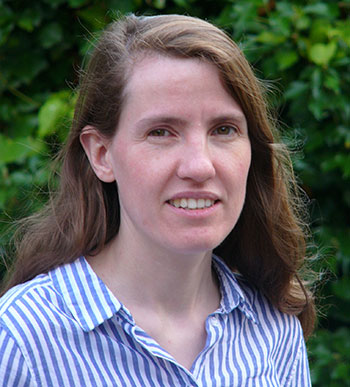
Margaret E. M. Thomas |
ASL Invited AddressParameterization, o-minimality and counting points Saturday, January 18, 2020, 10:00 a.m. - 10:50 a.m. Room 302, Colorado Convention Center The geometric tool of smooth parameterization has important diophantine consequences, and was central to the proof of the Pila–Wilkie Theorem connecting o-minimality and diophantine geometry. It remains an important approach in the ongoing pursuit of refinements to this key theorem. In this talk, I will survey a number of results on different types of smooth parameterization in the o-minimal setting, focussing in particular on questions of definability and effectivity, as well as discuss some applications to point counting results. |

aBa Mbirika |
MAA Invited AddressTwo Research Projects Birthed from Curiosity, Recreation, and Joy Saturday, January 18, 2020, 10:05 a.m.- 10:55 a.m. Four Seasons Ballroom 2, 3, 4, Lower Level, Colorado Convention Center This talk will center around two undergraduate research projects that were born from two specific recreational math topics. These topics brought me joy and then suddenly turned into full-blown research. The first topic emerged from a connection between the Fibonacci sequence modulo 10 and astrology. Oh No! Does the speaker believe in astrology!? Don’t worry, this topic will be strictly number theory with, of course, a foundation that gives its connection to astrology (in particular, the zodiac). The second topic arose from noticing the magical and mystic golden ratio appearing as an eigenvalue of a certain tridiagonal real symmetric matrix. Generalizing this matrix to ever-increasing sizes, a wondrous joy is born from the corresponding sequence of characteristic polynomials that emerge. And lo and behold the diagonal entries in Pascal’s triangle appear as the coefficients of these polynomials in an attractively inviting manner. Though the first project is one of number theory, and the second is one of combinatorial linear algebra, a cute connection between the two topics will be revealed at the end of the talk. |
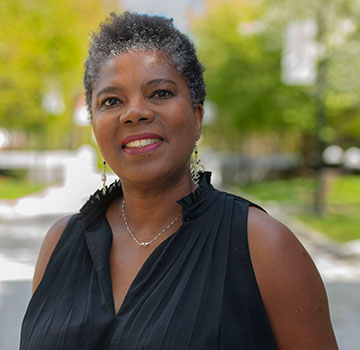
Suzanne Weekes |
NAM Claytor-Woodard LectureA numerical and analytical study of dynamic materials Saturday, January 18, 2020, 1:00 p.m.- 1:50 p.m. Room 607, Colorado Convention Center In this presentation, I will give an overview of some of the work that we have done on wave propagation through dynamic materials (DM). DM are spatio-temporal composites - materials whose properties vary in space and in time. Mathematically, we formulate the problem as linear, hyperbolic equations with spatio-temporally varying coefficients. Both analytic and computational means have been applied to the analysis of the effective properties of dynamic materials generated by certain dynamic microstructures. Spatio-temporal variability in the material constituents allows us to create effects that are unachievable through purely static (spatial) design. There are a host of geometries and effects that can be explored. For example, we have found that with dynamic laminates we are able to screen portions of the material from the effects of a wave disturbance. With checkerboard geometry in space-time, we see pulse compression and energy accumulation and recent work shows that these effects are structurally stable. |
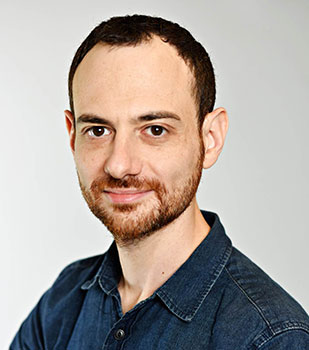
Benjamin Rossman |
ASL Invited AddressChoiceless polynomial Time Saturday, January 18, 2020, 1:00 p.m. - 1:50 p.m. Room 302, Colorado Convention Center In this talk I will give an overview of the ”choiceless” computation model of Blass, Gurevich and Shelah (1999, 2002). Machines in this model compute isomorphism-invariant properties of unordered structures. This is achieved by replacing the ability to make arbitrary choices (e.g. selecting the ”first” neighbor of a vertex in a graph) with parallel execution. After introducing the model, I will focus on the fascinating open question: Is every poly-time graph property is computable by a choiceless poly-time algorithm? Recent results have demonstrated the surprising power of choiceless poly-time algorithms (and subclasses like fixed-point logic) to solve problems like matching, determinant, linear programming, and isomorphism of Cai-Furer-Immerman graphs. On the other hand, it can be shown that the dual space V* of a finite vector space V is not constructible in choiceless poly-time. |
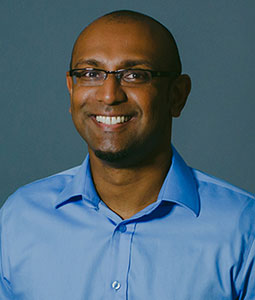
Rajiv Maheswaran |
MAA-AMS-SIAM Gerald and Judith Porter Public LectureThe fantastic intersection of math and sports: Where no one is afraid of a decimal point Saturday, January 18, 2020, 3:00 p.m.- 3:50 p.m. Four Seasons Ballroom 2, 3, 4, Lower Level, Colorado Convention Center Stereotypes permeate the perceptions of people who are either athletic or analytical. The disciplines of mathematics and sports have been kept at a distance, yet they share a commonality of deep interest in numbers. In this talk, I’ll detail how the emergence of new kinds of data and novel applications of it are building bridges across two worlds where no one is afraid of a decimal point. |